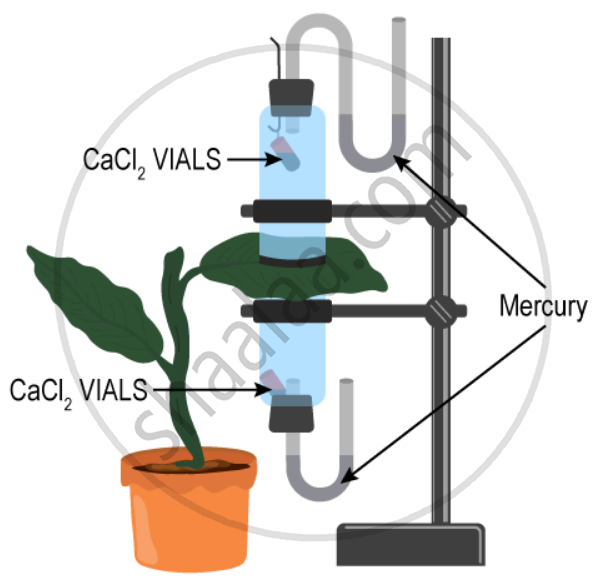Advertisements
Advertisements
Question
Name the following:
Any two parts of a leaf which allow transpiration.
Solution
Stomata and cuticle
APPEARS IN
RELATED QUESTIONS
Given ahead is a diagram of an experimental setup to study the process of transpiration in plants. Study the same and then answer the question that follows:

- Name the colour of dry cobalt chloride paper.
- Is the experimental leaf a monocot or a dicot? Give a reason to support your answer.
- Why are glass slides placed over the dry cobalt chloride papers?
- After about half an hour, what change, if any, would you expect to find in the cobalt chloride paper placed on the dorsal and ventral sides of the leaf? Give a reason to support your answer.
The apparatus shown in the following diagram is Garreau’s potometer designed to demonstrate unequal transpiration from the two surfaces of a dorsiventral leaf. Before keeping the leaf in between the cups, anhydrous calcium chloride (CaCl2) contained in two small vials were weighed and placed in both the cups. The ends of the cups were closed with corks through which two mercury manometers were connected. After few hours, CaCl2 vials were taken out and weighed again.

What do you mean by transpiration?
Differentiate Between Stomata and Hydathodes.
Given below are the diagrams of a certain structure in plants in two conditions.

(i) Name the structure shown.
(ii) Name the parts numbered 1-5.
(iii) What is the most apparent difference between A and B in the structure shown?
(iv) Describe the mechanism which brings about the change in the structure depicted in A and B.
Complete the following sentence with appropriate word:
In Nerium, the stomata are present in _________.
Suppose you have a rose plant growing in a pot, how will you demonstrate transpiration in it?
Write a short note on lenticular transpiration.
Name the three kinds of transpiration.
